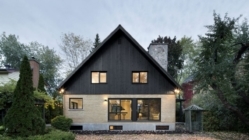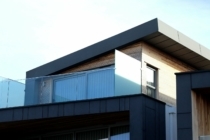Our Crazy-Popular Bridge Loan!
I have never been a fan of bridge loans, given their relatively high fees and high interest rates. My team, however, saw otherwise, as they were engaging far more borrowers than I was and realized that bridge loans are a necessity for a surprisingly large number of buyers. And, as a result, we have now closed more bridge loans than I ever thought possible.
A bridge loan, as most readers know, is a short-term loan that typically taps into the equity of a borrower’s departing residence so as to allow that borrower to buy a new home before she sells her departing residence – the classic solution for “how to buy before you sell.”
Most bridge loans tie up both properties, the departing residence and the new residence, forcing borrowers to pay off the departing residence mortgage and take on a huge new mortgage that is, once again, attached to both properties.
For example, if someone’s current home is worth $500,000 and they want to buy a new $500,000 home before selling their current home, a bridge lender might lend up to 65% loan-to-value against both properties, giving that borrower a new $650,000 loan (65% of $500,000+$500,000).
The drawback to the above scenario is that it gets very expensive for borrowers. This is because bridge lenders often force borrowers to pay off their existing mortgages in order to make the bridge loan the sole mortgage against both properties, as most bridge lenders won’t go in second position. And that in turn forces bridge loan borrowers to take on huge mortgages for which high rates and fees get attached. Traditional bridge loan rates are in the 10% to 11% range and fees can range from 1% to 2% of the loan amount.
JVM’s New Bridge Loan
Our “new and improved” bridge loan might also seem “expensive,” but because it is structured in an entirely different manner, it is not as expensive as it might seem at first glance – when compared to traditional bridge loans. And it has proven to be extremely popular because of its benefits.
This is particularly the case for seniors who have substantial equity but very little verifiable income.
The bridge loan works like this: Our investor will lend up to 75% loan-to-value against the departing residence and happily go in 2nd position (the first does NOT have to be paid off). So, if our borrower has a $1 million home with a $500,000 mortgage, our bridge investor will loan $250,000.
And THIS is why it is so popular: there are no points or fees charged up front; there is no interest charged; and there are no payments due.
Fees: What our bridge investor requests for their bridge loan is 2.4% of the sales price of the departing residence when it sells. While this may seem pricey, it often works out to be less than what a borrower would pay in total for a traditional bridge loan, as described above.
Our bridge investor will only lend against homes that they deem salable within 90 days, meaning no very rural or unique properties.
In addition, if the house does not sell within 90 days, our investor will buy the departing residence from our borrower, and then list it directly themselves.
JVM’s New Bridge Loan Benefits
The benefits of this loan are many.
- Lower Fees: The fees often end up less than what is charged for traditional bridge loans.
- No Payments/No Interest: This is an enormous stress reliever for borrowers, as they don’t have to cover the massive payments associated with traditional bridge loans.
- Easy to Qualify For Purchase Mortgage: Because these loans do not impact debt ratios, they do not impact purchase mortgage qualifications.
- Fast Closes: We can combine these bridge loans with any other type of purchase loan, and close both very quickly (as fast as 12 calendar days).
There are more details of course, but if any readers or their clients are in need of bridge financing, we’d love to help!
Rates Fell, So Have They Peaked?
Rates fell today in response to a better-than-expected inflation report. The Personal Consumption Expenditures (PCE) report came out today at 3.9% for August. This is the first time we have seen a PCE number starting with “3” in two years – so it was pretty good news. Barry Habib also pointed out today how if shelter cost lags were properly accounted for, the number would be considerably lower. And that is also why we can expect even lower numbers in the future, indicating that we remain on the right path with respect to inflation.
More importantly, the bond market recognized this too, so rates fell. Does this mean rates have peaked? I doubt it. The Fed is still threatening more rate increases and the investors remain on edge in light of that fact. And, given that nothing moves in a straight line, it is very likely that additional economic reports will surface that send rates northward again. This will continue until we get some seriously bad economic news (particularly with respect to employment), a crisis of some sort, or a major stock market correction, as I mentioned in Wednesday’s blog: Why I Was So Wrong About Rates!
Sign up to receive our blog daily










